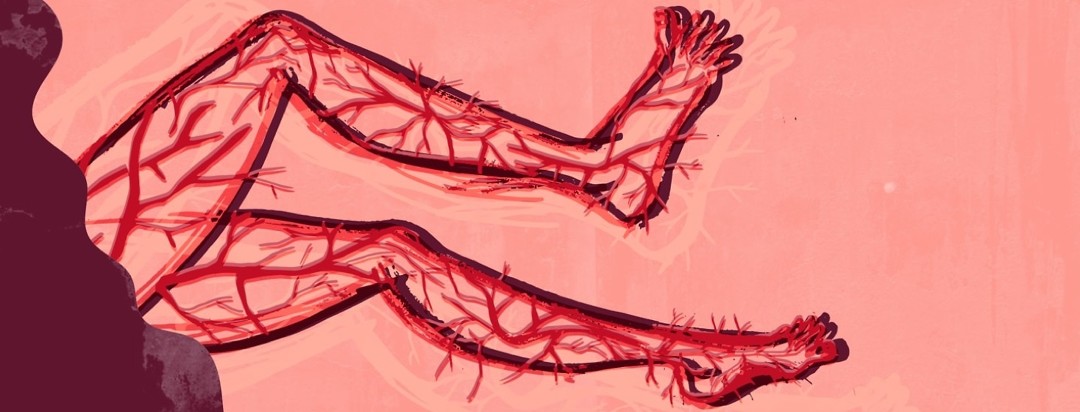Is It Nerve Pain or RLS? or Is It Both?
Pins and needles may be a great way to describe restless legs syndrome (RLS), but so many other physical sensations that aren’t RLS may also be described in the same way.
How can you know if the unpleasant sensations you’re feeling in your legs are actually RLS and not something else?
Pins and needles, RLS style
If you’ve been diagnosed with RLS, then you know that timing is typically — though not always — a factor in your diagnosis. RLS, which may happen at any time of day, brings uncomfortable sensations and movements in the legs during periods of relaxation or inactivity.
This is why RLS is considered a sleep disorder, as it can become unbearable right at bedtime when the brain and the rest of the body wants to fall asleep.1
But RLS isn’t experienced only at bedtime. It can strike at any time of day and may be especially problematic for people who are traveling long distances or sitting at desks for long periods of time. This is why RLS is also considered a neurological movement disorder.2
By and large, the best way to find immediate, if temporary, relief is to get up and move around or massage the legs. Those with RLS discomfort may find it annoying or a nuisance when trying to fall asleep, but for many, it’s also quite painful. However, some people who have been diagnosed with painful RLS may ultimately discover later that what they’re actually experiencing is something known as neuropathy.
Pins and needles, neuropathy style
Neuropathy generally describes nerve pain which can be symptomatic of other conditions. But neuropathy is also a medical condition all its own, describing damage to one or more nerves which results in — you guessed it — pins and needles (and other unpleasant sensations).3
Peripheral neuropathy, in particular, can confuse the issue. It more specifically targets the pain and discomfort of nerves in the arms, legs, hands, and feet — areas whose functions are served by the peripheral nervous system.
While RLS refers to leg sensations, RLS is also known to occur in the arms. So it may be difficult to know if a case of nerve discomfort in these areas is caused by RLS or peripheral neuropathy without diving deeper.4
A closer look at neuropathy
Neuropathy can be broken down further, into:3
- Mononeuropathy - damage to a single nerve or nerve type
- Multifocal neuropathy - damage to a combination of nerves in a limited area
- Polyneuropathy - widespread nerve damage to peripheral nerves throughout the body
Like RLS, neuropathy comes complete with its own set of criteria for diagnosis.
What differentiates it from RLS discomfort is the fact that its pain does not go away with movement.
In fact, movement may worsen a case of neuropathy. And the pain tends to be present, to different degrees, throughout the day, whereas RLS comes and goes based on activity level.
Why a correct diagnosis matters
The challenge in living and dealing with either condition boils down to appropriate treatment. Treatments for one does not necessarily treat the other.
For instance, treatment for RLS can include:5,6
- Physical movement (walking, stretching)
- Massage or warm bath
- Application of warm or cold packs
- Good sleep hygiene
- Discontinuation of caffeine consumption
- More frequent physical exercise
- Prescription medications (pramipexole, ropinirole, gabapentin enacarbil, rotigotine)
Whereas, treatment for neuropathy can include:7
- Physical therapy
- Transcutaneous electrical nerve stimulation (TENS)
- Surgery
- Over-the-counter pain relievers
- Topical treatments
- Acupuncture
- Prescription medications (gabapentin, pregabalin, amitriptyline, SSRIs)
Obviously, there’s little crossover in treatments for the 2 conditions.
What to know about links to other medical conditions
On top of that, both are linked to other separate medical conditions. If you don't have a confirmed diagnosis, you may also be unaware of these co-existing conditions, which also likely need treatment.
For instance, RLS is associated with these other conditions:5
- Pregnancy
- Genetic predisposition
- Iron deficiency
- Kidney failure
- Spinal cord conditions
Whereas neuropathy is associated with these other conditions:7
- Diabetes
- Genetic predisposition
- Autoimmune diseases
- Tumors (both malignant and benign)
- Infections (Lyme disease, shingles, Epstein-Barr virus, etc.)
Can you have both RLS and neuropathy?
Yes, both can coexist in the same person. RLS also tends to occur more frequently in people who have neuropathy that has been inherited (it runs in the family) but not when their neuropathy is acquired (through physical trauma or a condition like type 2 diabetes).8
All the more reason to clarify your symptoms: to ensure you are getting adequate treatment for one, the other, or in some cases, both.
Share your experience of how you were diagnosed with RLS and the symptoms you experienced with others members of the community.
Community Poll
Has a loved one ever been affected by your RLS symptoms?

Join the conversation